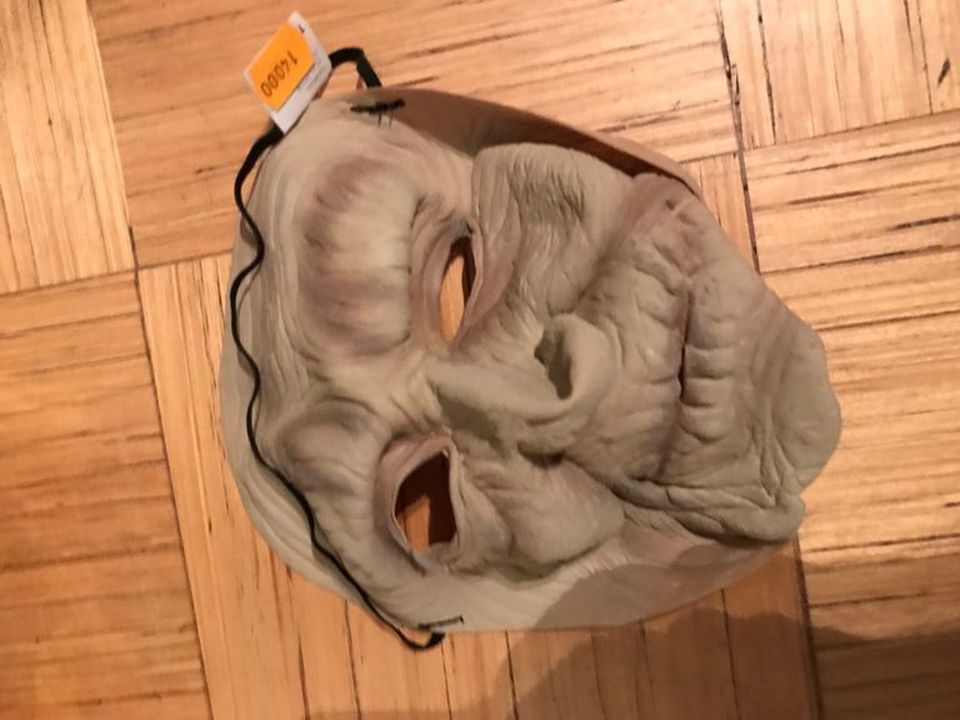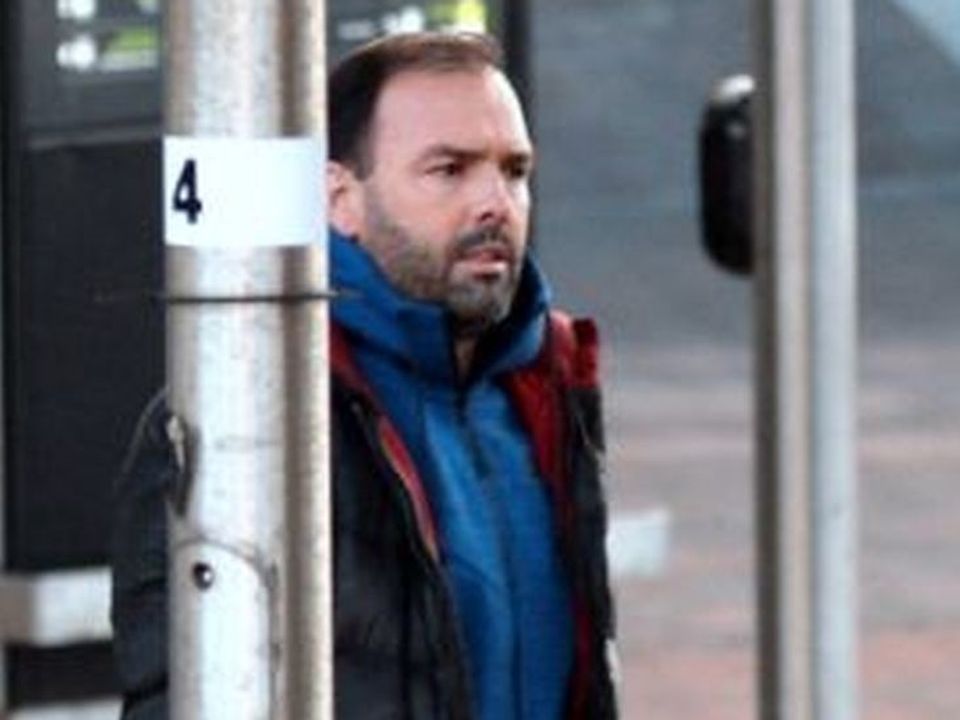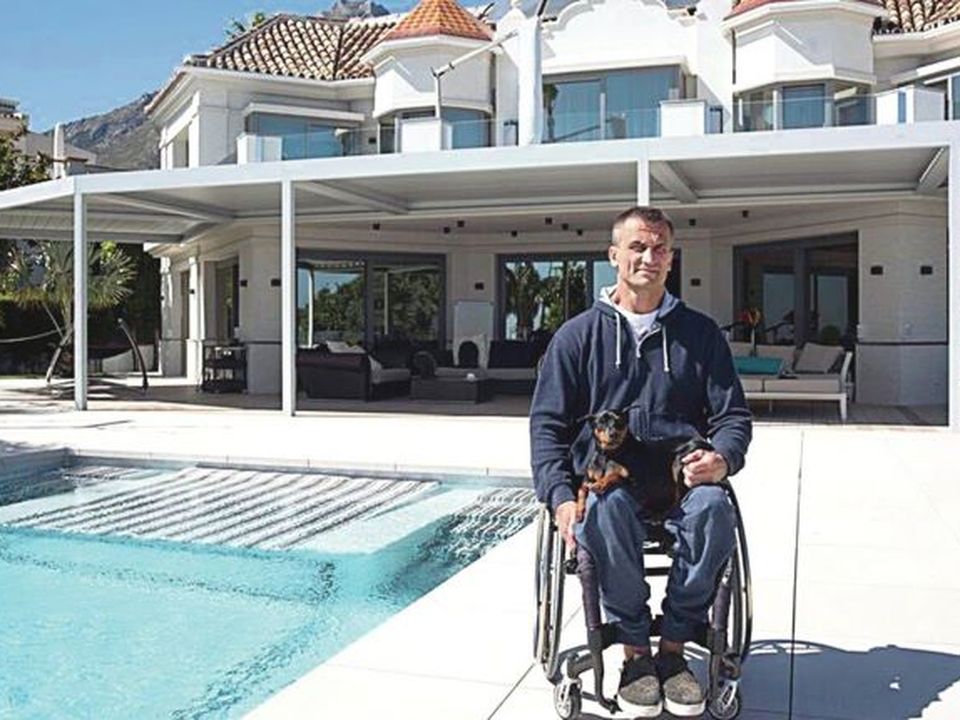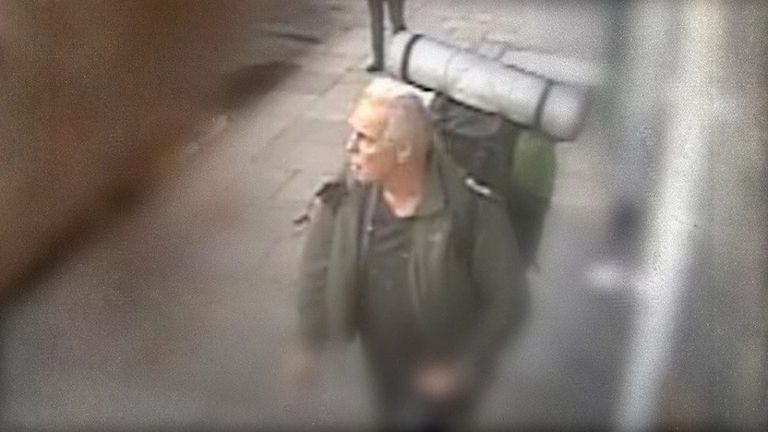- Home >
- Crime >
- Irish Crime
Crime Long Read: How hitman-for-hire Imre Arakas ended on Kinahan Cartel payroll
His nickname ‘The Butcher’ only added to his air of menace and he looked like he had walked straight off a James Bond set
The tall, handsome Estonian with the blond hair and tanned skin walked confidently through the baggage hall in Dublin Airport and headed for the belt where luggage from the Alicante flight was beginning to emerge.
He waited patiently until he saw his rucksack plonk on to the carousel and snake its way around towards him.
He’d packed a tent, a little camping stove, fishing rods, binoculars, a ground sheet and sleeping bag before he’d made his way for his flight – now he looked every bit the part of a nature lover who enjoyed holidays in the great outdoors.
Despite his celebrity as an international hitman for hire, Imre Arakas was confident that nobody would know him in Ireland and that he could pass himself off as a tourist.
After all, he was a regular visitor now and he did actually like to fish but, as always, business would have to come before pleasure.
His paymaster for this trip was Daniel Kinahan, the son of Christy Kinahan Snr and director general of the Irish mafia on the Costa Del Sol where Arakas lived.
He’d worked for them before and he’d always been paid swiftly and efficiently on completion of a job.
Kinahan had told him that he’d nothing to worry about when it came to the Irish police force. They were disorganised, he’d said, and too busy with a string of murder investigations to know anything about his latest secret weapon –Arakas.
It was April 2017 and 14 months into the feud that Kinahan had unleashed in Ireland – 11 murders had been linked to the fallout within the Irish mafia, nine of which had happened on home turf.
A number of valued Kinahan hitmen were in custody or on the run – the last killing had been the previous December when Noel ‘Duck Egg’ Kirwan was murdered in the driveway of his home. Daniel Kinahan was frustrated with the calibre of victim and desperate for a big scalp in his feud with the once-aligned Hutch faction.
Imre Arakas in Dublin
For Arakas, that meant a bonus payday of €200,000 once he got his target, Kinahan’s arch nemesis and Hutch loyalist James ‘Mago’ Gately.
Arakas threw his rucksack over his shoulder and headed out of the airport terminal. He looked left and right, then crossed the road where buses lined up to take passengers to the city centre. He boarded one and sat at the back, looking out the window as he ran over his plot to kill in his head.
Just as the bus began to pull out, one last passenger hopped on. Had Arakas been more observant he may have noticed that the thin man in casual clothes had no bag, that he was alone, hurried and out of place.
He could have had no idea that the late arrival hadn’t flown in like the majority of his fellow passengers, but was, in fact, an undercover detective scrambled in a hurry after officers at the Drugs and Organised Crime Bureau received a call that Arakas was on his way.
As the bus pulled off, the last passenger sat down and caught his breath. Then he took out his phone and typed: “Have eyes on him boss. We’re headed towards town.”
Read more
**************
Two years previously, on a night in early November 2015, a leader of an organised crime group in Kaunas, Lithuania, was ambushed. Deimantas Bugavicius had been under surveillance for months while a skilled hit team from neighbouring Estonia worked out where best to shoot and kill the larger-than-life dealer with the celebrity girlfriend.
Bugavicius – nicknamed Diamond – had been shot beside his mistress, pop star Vita Jakutiene, while she was estranged from her husband.
The extraordinary tale, which played out across the Lithuanian media between the gossip and crime columns, detailed how 28-year-old ‘Diamond’ was assassinated at a rental property he frequented while the Barbie-doll lookalike from the girl group New Puppets looked on in horror. The couple had just pulled in through the security gates of a private apartment complex when he was killed.
After the murder, it had emerged Jakutiene had been secretly filmed during her affair with ‘Diamond’ and high-tech recording equipment was discovered in her BMW car and at the apartment. The pop star had gone on to have the murdered gangster’s child – her third – before reuniting with her husband and the father of her other two offspring.
Vita Jakutienė
Reports from Lithuania first suggested that Vita had got out of the car at the time of the shooting, while more recent reports have stated she was in the Mercedes when a gunman approached and pumped 10 bullets into her lover’s body. It has been claimed that the bullets missed her by a hair’s breadth and even whizzed past her groomed blonde locks.
There was huge coverage of the daylight murder, largely because of the identity of Vita, a huge star in the Baltics.
For police, the killing was clearly a professional hit. Bugavicius was hit in the chest and neck and was dead within minutes, but his masked assailant made a clean getaway. The murder inquiry was first conducted by Lithuanian police, but six months into their probe they called in the help of the Organised Crime Bureau of the Central Criminal Police (CCP) of Estonia.
Ago Leis, head of the CCP, would later tell and interviewer: “Estonians have contacts all over the world, and criminal agreements and decisions are made abroad, but the consequences reach us. This is the case, for example, with drug crime, where the purchase and sale of cocaine or cannabis is concluded on the sunny coast of Spain or on a side street in Amsterdam and Estonia is used as a transit country.
“Unfortunately, Estonians have also exported their ‘talent’ for contract killing. We prevent international organised crime in co-operation with the police from other countries. We need to trust each other and exchange information promptly to apprehend criminals who operate outside their home countries.”
The Estonians got to work on identifying the assassins and a year after the murder, deep in the underworld, the cops’ contacts came good and three names were handed up as those responsible for the murder: Arle Grabbi, Hans Erik Ehvert and Imre Arakas.
Investigators began to work backwards, tracking their movements and travel, analysing phone data and piecing together a puzzle of what had happened on the night of the murder.
Neither Ehvert or Grabbi were known to police. With no major convictions, they were friends who shared an unusual hobby of medieval tournaments, which saw them train in combat while dressed in coats of armour.
With the help of their European policing partners, the Estonians were able to see that both had spent a lot of time in Lithuania in the run-up to the Bugavicius murder.
Bugaviciuswas shot deadwhilesittingbeside popsinger Vita Jakutienè
They had never travelled together and each time they made the journey they had left their mobile phones at home in Estonia and used rental cars.
On the same night that Bugavicius was killed, police discovered the car they were driving was set alight in a yard. It had been stolen from France several months earlier, meaning the pair had done a lot to cover their tracks and evade capture.
While the pair remained under surveillance, the investigation continued and focused on the third man, Imre Arakas, who was not only well known to police but had also built up quite a reputation for himself as a celebrity gangster.
Heading for his sixties, Arakas had a very colourful past and spent a lengthy period in a Soviet prison known as a Gulag, where conditions were notoriously bad.
In 1979, aged 20, he and a friend broke into a shooting club in Tallinn and stole 13 handguns and hundreds of rounds of ammunition. Arakas was quickly arrested and escaped from the courthouse on April 18, 1979, evading authorities by jumping from the viewing platform and falling 30 feet to freedom.
He was arrested again after 87 days and sentenced to 15 years in jail, mostly in a high-security Russian facility. After his release in 1991, he joined an Estonian organised crime gang and took part in a feud with a Russian outfit that killed over 100 people.
Arakas was nearly killed himself on more than one occasion and had plenty more brushes with the law, spending periods in jail for arms possession among other offences. Linked to rackets and organised crime, he was last in court in Tallinn in 2011 where he was one of three men accused of attempting to frame businessman Nikolai Reisman for ordering the murder of a rival Toomas Tamm.
He was charged in connection with a fake contract killing but struck a plea bargain and served just 14 months behind bars. By 1998, he left Estonia for Spain where he survived another assassination attempt in Marbella.
Part of a large network of Eastern European criminals, he had honed his skills on the Costa and became a freelance professional killer who police believed had moved around Europe carrying out hits for a variety of gangs.
As Estonian police continued to track Arakas’ movements they could see that he was visiting Ireland throughout 2016 and 2017. While hitmen have hobbies too, and Arakas was undoubtedly a fishing enthusiast, Ireland was in the grip of a gangland feud which had begun in Spain with the implosion of the Kinahan Organised Crime Group. Tensions were high and the Kinahans were believed to be one of the groups who had previously used Arakas’ services.
Nothing could be left to chance and a meeting was organised with gardai through the Europol and Eurojust platforms to oversee any legal co-operation needed. The next time he headed for Dublin, whether it was to fish or to kill, ‘the Butcher’ would be placed under surveillance.
Arakas spoke to nobody on the bus but unknown to him he was under surveillance and a large garda operation was in place. Underestimating gardai and the power of a new wave of information sharing with European police was about to cost the underworld one of its most experienced assassins.
Back at their base in Dublin Castle, officers from the Garda’s Drugs and Organised Crime Bureau were staying in close contact with their undercover officer as he rode the bus into town.
The 59-year-old veteran criminal was on a promise of the biggest money of his career and twice that if he could take out Gately and Patsy Hutch – the most senior members of the Hutch family group living under a ring of steel in the north inner city.
In Dublin’s city centre, he hopped off the bus and turned right at the top of O’Connell Street. Closely followed, he headed towards Champions Avenue where Patsy Hutch’s home remained under garda protection more than a year after the Regency Hotel attack had challenged the power of the Kinahan organisation in Ireland.
Patsy Hutch (pictured) — © Colin Keegan, Collins Dublin
With his rucksack on his back, Arakas walked up and down the road taking in the area, its proximity to the bustling O’Connell Street and the roads merging onto it.
He wandered up to Avondale House, where Gareth Hutch had been shot dead by Kinahan killers the previous May. As Arakas staked out his hunting ground, recently convicted Jonathan Keogh remained on the run but wanted for the Avondale House shooting.
Keogh and another shooter had followed Hutch out into the car park at the front of the complex where they ran up behind Gareth Hutch and pumped four bullets into the back of his head. Arakas examined the area and looked around where they had planned their getaway.
Then he turned and wandered down towards the Sunset House, where Eamon Cumberton had worn a ‘Freddy Kruger’ mask when he killed barman Michael Barr. Cumberton was, at that point, in custody awaiting trial and Arakas had a good look around the scene of the murder before strolling off towards Sean McDermott Street, another area where Hutch family members and their associates live.
After his two-hour tour of the north inner city, Arakas went back towards O’Connell Street and into a gift shop where he purchased a wig. At 8.20pm Arakas stood outside Barry’s Hotel where a van emblazoned with Blakestown Tyres pulled up and he got in. Immediately, officers knew that they were literally having a view to a kill.
The tip-off from the Eastern European police forces of Estonia and Lithuania was not random. Estonian and Lithuanian state prosecutors had signed a treaty known as Operation Gray Eye at the end of September 2016. Later, Polish colleagues committed to the joint investigation team, after which numerous meetings took place in Tallinn, Kaunas, Valencia, The Hague and elsewhere in the following years.
The target was a highly professional and dangerous international organised crime group of which Arakas was a member. The UK and Spanish were also involved as the operation codenamed ‘Icebreaker’ became the biggest of its kind in Europe against the gang involved in cigarette and drug trafficking along with assassinations.
At the same time gardai were working tirelessly with their European counterparts to take down the Kinahan Organised Crime Group who had been headquartered for decades in Spain but whose command had moved to Dubai. The Netherlands, too, were fighting their own homegrown group, known as the Mocro Mafia, which had reached deep into mainland Europe and beyond.
At the same time that Arakas had boarded his flight to Dublin, Daniel Kinahan was planning his wedding, which would take place in the summer of 2017 at the Burj Al Arab hotel in Dubai. There, the United States Drug Enforcement Agency (DEA) carried out a huge surveillance operation which established that the Italian mafia, the Dutch and the Irish had joined with their Eastern European counterparts to form a super cartel.
Daniel Kinahan
In the history of Europe, and indeed that of organised crime, there had never been a time when co-operation was better between police forces who were communicating on a daily basis about their targets and meeting regularly to discuss information sharing.
Such was the levels of togetherness, that it was not uncommon for foreign colleagues to be informed about the latest leads even in the middle of their sleep.
Stephen Fowler was driving the van. At 60, he was well known to gardai and his son Eric was listed as an associate of the Kinahan organisation. In 2012, Fowler had pleaded guilty to possession of cannabis worth €450,000 and served six years of an eight-year sentence. At the Fowler home at Blakestown cottages, Arakas had bedded down for the night, unaware that the property was being surrounded by officers.
He had a big day ahead. He was to have the Kinahan cartel’s trophy kill in their feud with the Hutch faction and no expense was spared.
At 11.25am Arakas was up and standing beside the single bed when the doors burst open and he found himself surrounded by gardai.
The Blackberry phone he had been using the day before was found on the couch beside him, as well as a piece of paper with Estonian writing on it and the name “James Gately... in Newry” scrawled in English.
When the note was translated, it read: “Eight row, second picture visible”. A mirror, which had been purchased the previous day, was found in a bag, as well as a bundle of euro and sterling notes.
Stephen Fowler had put Arakas up for the night at his home. — © Paddy Cummins - IrishPhotodesk.i
The Blackberry phone was an encrypted device which was password protected so its contents would prove difficult to access. Controlled by an administrator, gardai knew that it would be quickly deleted remotely as soon as word got out that the plot to kill had been busted.
But one officer, Garda Sean O’Neill, quickly got out his own phone and started photographing the thread of messages which were open on it. As he collected all he could, the messages disappeared, but not before the conversations between four user names “Ow new”, “Knife”, “Bon4” and “Bon new” were captured.
Later in a courtroom, Detective David Gallagher would read the secret messages that marked out the planning that had gone into the attempt to kill Gately. The first was from user “Knife” on April 4 at 1.12pm to “Bon new” and read: “The car exits the rear of this building... from a shutter which opens up and down from a buzzer, there’s a ball camera above the entrance. Champagne colour Toyota Avensis. His parking space is as soon as the shutter opens directly in front of you. There’s a gym. He drives most days he seems to go to Newry and back”.
The next message was from User “Bon new” at 10.17am to user “Knife” and read: “Ok... And where can we see photos of him??”
The next message was from user “Knife” at 1.12pm to user “Bon new” and read: “For the picture go into Google write “James Gately...Dublin” go into images – the eighth line of pictures, it’s the second picture in, he has a black suit on and when he clicks on picture it has ‘James Gately’ wrote under the picture, it’s a clear picture of him”.
Imre Arakas targeted James ‘Mago’ Gately (pictured)
These three messages had been forwarded from Bon 4 to the defendant’s phone at 11.31am on April 4 and were consequently found on it by gardai, the Special Criminal Court would hear.
The next message from Arakas’s device to “Ow new” at 1.57pm read: “Well, I go to internet soon and have a look. My plan was actually to go there tomorrow and for a day or two see the situation in real. Then perhaps I get a better plan.
“So far, in case I’m totally alone. it seems it’s possible to take him down when he comes out of car. It’s based on Google maps pictures (sic).
“Then there was an open car park behind the house but if they closed it ,the situation is another. If not at the car, then on his way to the front door. There were huge advertisements on the way and looked like it’s possible to hide behind.
“The whole problem there is that there is nowhere to hide. Especially you wait for the moment he comes out of the door.
“Also silencer would be good. But especially it is good if the dog is really accurate because if the picture in Google is the same that in real life it could be just one shot to the head from the distance and that’s it.
“Also there is a trick that won’t allow him to close the front door behind him and I could follow him to the corridor. But it only works when the door frame is metallic but by the picture it looks plastic but I see there what I can do. Best regards”. [sic]
The final message from Bon 4 to Arakas’ device at 12.05pm read: “We have a tracker on his car so my idea is when he goes out in car, we know he is coming back we track him live when he is heading back to his apt. When he is 10 minutes away he get in position and he parks in the same space always so then you have him.” [sic]
Det Insp Gallagher would tell the court that the time was based on the time zone of the particular user. He said information on the handwritten note that was found tallied with the evidence. On the back of the page were 15-digit code numbers written alongside the user names, which would have been the codes needed to enter the phone. Arakas’ fingerprint was found on the page.
Assistance from the PSNI in the investigation would confirm that Gately was residing at the apartment block detailed in the messages.
A tracking device was later found under his car, a Champagne coloured Toyota Avensis, and it had been placed there on March 30, 2017. CCTV footage showed that the occupants of a blue Peugeot van, later identified as members of the Kinahan organisation, were responsible for placing it on Gately’s car after they had taken the ferry from Birmingham to Ireland on March 28, 2017.
Imre Arakas
Safely in custody in Ireland, senior garda officers shared their news with their Lithuanian and Estonian counterparts whose information had proved vital in saving the life of Gately.
As he awaited trial, Lithuania told the Irish government that they too wanted Arakas for a murder once the justice system in Ireland was finished with him.
Less than a year after his arrest, the High Court endorsed a European Arrest Warrant and agreed that he would be transferred to the Baltic state once dealt with in Ireland.
Charged with conspiracy to murder Gately, Arakas gave a bizarre interview to a newspaper in his native Estonia, conducted in a series of letters from the jail. In it, he denied he had anything to do with a murder plot saying he did not know Gately.
He also denied that he was an international hitman or that he was ever called ‘The Butcher’. He described his prison conditions in Dublin as being ‘surprisingly good’, revealing how he had a job behind bars fixing televisions and computers.
Despite his protestations of innocence, he pleaded guilty in court and was sentenced to six years in prison for his role in the would-be hit.
In court, his lawyer said his client had been penalised harshly for the offences he had committed in Estonia and had got himself involved in a separatist movement to “cast off” Russian oppression. Arakas had a professional diver’s licence on him when he was arrested, added the barrister, Michael Bowman SC.
Imre Arakas appeared by video-link in court
The court heard Arakas’ health had suffered and he had a “stroke episode” in prison and was fitted with a device to monitor his heart.
A significant five figure sum of money was to be paid for the hit, judges at the Special Criminal Court were told, but Arakas owed a debt which was considerably larger than the amount he was going to get paid and this would have been set against the figure.
In mitigating factors, Mr Bowman asked the court to consider that his client, an ex-wrestler, had two children and had received a lot of lengthy sentences in Russia which had scarred him deeply.
Another factor in mitigation, he said, was his guilty plea and the fact he had acknowledged his role during garda interviews. Mr Bowman submitted to the court that his client had found his period in custody difficult because his health was failing and he is a foreign national.
The defence counsel said a governor’s report from Portlaoise Prison outlined Arakas was a model prisoner and was serving his sentence in a segregated block.
“He was not at the apex of the organisation and had no act or part in the operational part of it,” concluded Mr Bowman, adding that his client was willing to leave Ireland as soon as he was released from custody.
**************
The hulking figure of the six-foot something Estonian with long, silver hair and piercing blue eyes was always sight to behold during his appearances in Irish courtrooms.
His nickname ‘The Butcher’ only added to his air of menace and he looked like he had walked straight off a James Bond set – a vaguely unkempt Max Zorin-type character who 007 would discover was the product of Nazi medical experimentation.
A survivor of the Cold War and of the notorious Gulags, an international hitman who had washed up on our shores he was like a character dreamed up in a work of fiction.
But his end was none too Hollywood – and neither was that of the Kinahan fixer who’d given him a bed for the night. Eighteen months after he was nabbed in Stephen Fowler’s home, the drug dealer was assassinated in a murder suspected of being sanctioned by the Kinahan mob embarrassed by the Arakas arrest and determined to save face on the international scene.
But if Arakas wasn’t peculiar enough in his own right, it seemed his boss – who European police forces say is linked to the Kinahan cartel – is even stranger than fiction. In May 2019, as Arakas languished in Portlaoise prison fixing television sets and enjoying the cuisine, a massive operation co-ordinated by Europol saw the arrest of more than 20 members of his mob.
Operation Gray Eye concluded with the arrest of the wheelchair-bound alleged ‘patron’ of what was described as the biggest criminal gang in Eastern Europe.
Arakas was right at the top of the structure and for years had worked along-side Sergejus Beglikas – the multi millionaire paraplegic suspected of running the show. If Arakas was Bond’s Zorin, then Beglikas could be mistaken for the even more sinister Blofeld – the wheelchair-bound criminal mastermind with aspirations of world domination.
Sergejus Bėglikas
In an extraordinary interview with El Espanol, Beglikas said he was in a physiotherapy clinic near his mansion on the Costa Del Sol on May 16 when officers came to arrest him under Operation Fossa. And of course, he insisted his fortune is legal. During the interview, Beglikas said he was told he was detained for his role in a gang involved in money laundering and drug trafficking which Europol believe made €680m in just two years.
Agents from countries including Portugal, Lithuania, Spain and the UK netted diamonds, cash, gold bars and luxury cars worth in excess of €8 million during the search of 40 properties linked to the gang.
At Beglikas’ mansion at Sierra Blanca near Marbella they found safes filled with jewels, cash and gold and 90 encrypted mobile phones. During the search there was nobody home except his hairless Sphynx cat and a collection of dogs. “I was never an angel,” he told El Espanol’s journalist. “I know that in my country they want to kill him. I like money very much. I do not hide it… I know it’s a very serious issue. But I neither kill nor traffic with drugs.”
Polish authorities at the centre of the probe have said that Beglikas leads the gang who trade in cocaine and hash and launder the money in Poland. In addition, they believe that the gang has in-house Estonian assassins to kill their Lithuanian rivals.
Beglikas has so far denied all accusations. “Justice will end up giving the reason. I think that in Eastern Europe there are people who want me wrong and who are staining me. (sic)
Posing in his wheelchair and with his cat Phoenix he says: “No. I can not lead an international band in my personal situation. How do I do it? …. I insist. I am not an angel but I do not traffic with drugs or send anyone to murder (sic). I deserve to go with my family wherever I please.
He said years of hard work afforded him his €4 million Spanish property and other trapping of wealth: “Work. Years of effort….”
Beglikas said he has been wheelchair-bound for 22 years since he had a car accident.
He says he is currently having his back reconstructed. Polish authorities have linked Bejlikas to the Kinahan cartel.
Europol said the ‘Icebreaker’ operation had dismantled what they described as Europe’s top criminal group behind drug trafficking and assassinations.
Lithuanian Police Commissioner General Linas Pernavas said at the time that it was the murder of Diamond that led to the gang’s exposure.
In June 2022 Arakas gave evidence via video link from Portlaoise to the Diamond murder trial where Estonians Grabbi and Ehvert were found guilty along with a Lithuanian man Ricardas Baika, who was found to have assisted them. Still fighting extradition for his own pre-trial investigation, he sported a mullet hairdo and looked like prison was taking its toll as he spoke to the court.
According to evidence presented in the case Arakas travelled to the city of Kaunas along with the Estonians and stayed in an apartment rented by Baika, a former boxer.
Police said they found Arakas’ fingerprints and DNA during a search of the apartment but he said he couldn’t explain how they got there.
The court also heard that police found a number of items during a search of Arakas daughter’s home in Tallinn, Estonia, including masks, camouflage noses, bulletproof vests, camouflage clothes, a rifle searchlight and a map of Lithuania.
The mask found among the stash
When questioned about this in court, Arakas replied: “Lithuanian policemen were very strict, they took a map of Lithuania, things I had for more than 20 years, my son’s shoes.
“I don’t know who was there, I was in Spain at that time, “said Arakas.
While the warrant for his arrest claims he was at the scene of the crime, Arakas denies this and said he was celebrating a birthday at a Spanish restaurant at the time with another suspect referred to as Mr Tuuksam.
Asked about other visits to Lithuania, he said he wasn’t there in 2014 or 2015 but was there in 2016. “But it has nothing to do with D. Bugavicius or criminal activity. I am not a criminal,” he said from his jail cell.



































































